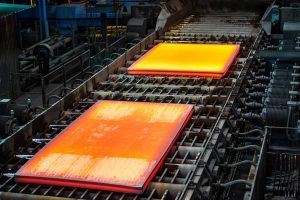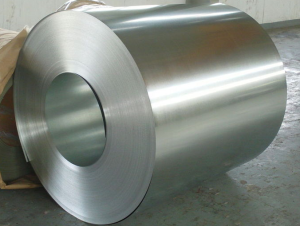
SMU price ranges: Sheet market rising ahead of holidays
Following last week’s pause, SMU’s price indices were overall steady to higher this week, holding at or near multi-month highs.

Following last week’s pause, SMU’s price indices were overall steady to higher this week, holding at or near multi-month highs.

Less than half of the steel buyers who responded to our market survey this week reported that domestic mills are willing to talk price on new spot orders

SMU’s sheet and plate prices took a breather this week, holding relatively steady at multi-month highs.

All of SMU’s sheet price indices rose this week, climbing to new multi-month highs. At the same time, our plate index held steady.

Steel mill lead times extended this week on all sheet and plate products tracked, according to responses from SMU’s latest market survey.

All five of SMU’s sheet and plate price indices increased this week for the second week in a row, with all products inching up to new multi-month highs. Prices are now up by $30-70/st compared to those seen four weeks ago.

Mills are less willing to talk price on spot orders on all the sheet products SMU tracks, but plate has veered the other way, according to our market survey this week.

Most sheet prices inched up again this week following mill efforts to set a floor under tags and to increase them from there.

Angelo “Ange” Borzillo has passed away at the age of 92. He leaves behind a legacy that will endure as long as the steel he helped develop: Galvalume sheet steel.

Sheet steel indices increased across the board this week, while plate prices held steady. All five of SMU’s price indices are higher than they were two weeks ago, and all but one are above levels recorded four weeks ago.
The steelmaker released updated extras to customers on Oct. 15, marking the second adjustment in just six weeks following their early September revision

Mills are more willing to negotiate spot prices for both sheet and plate products, according to our latest market survey results.
AZZ Inc. delivered steady results in its fiscal second quarter. While infrastructure-heavy work buoyed its Metal Coatings segment, its Precoat Metals business navigated softer building markets and tariff-driven uncertainty.

Sheet and plate lead times saw minor shifts this week, according to SMU’s latest market survey. Sheet times have inched up over the last month but remain within days of multi-year lows, as they have since May. Plate lead times have bobbed within a tight range for months, hovering roughly a week longer than this time last year.

Steel buyers say mills remain slightly more willing to negotiate spot prices for sheet and plate products than in mid-September, according to our latest market survey.

Sheet and plate prices were flat or lower this week as less discounting from domestic mills was offset by few signs of an anticipated rebound in demand.

Sheet times ticked higher but remain within days of multi-year lows, territory they have been in since May. Plate lead times have shifted lower in the past month but remain about a week longer than they were at this time last year.

SMU’s price ranges were mixed again this week as the market continues to seek a floor amid industry hopes for a Q4 rebound.
U.S. Steel has revised its Galvalume coating extras higher effective Nov. 2, 2025. The steelmaker released new extras to customers on Friday, Sept. 12.

Sheet and plate lead times held steady yet again this week, according to steel buyers responding to our latest market survey, a trend in place since May.

The majority of steel buyers responding to this week’s market survey continue to report that mills are open to negotiating spot prices on sheet and plate products.

Steel prices remained largely unchanged this week, staying at or near lows last seen in February. All five sheet and plate products tracked by SMU moved by no more than $5 per short ton (st) from the previous week.

The Commerce Department announced the final anti-dumping and countervailing duty (CVD) margins in the sprawling trade case investigating corrosion-resistant steel imports.

Steel buyers report steady lead times for sheet and plate products, a soft-sideways trend we've seen since May.

All five of SMU's steel sheet and plate price indices declined this week, falling to lows last seen in February.

Mill production times for sheet products are holding just above multi-year lows, while plate lead times remain elevated.

Most steel buyers continue to report that mills are open to negotiating spot prices. Negotiation rates have remained high for most of the past three months.

Sheet and plate prices were either flat or modestly lower this week on softer demand and increasing domestic capacity.

Sheet prices slipped again this week amid discounting from certain mills and ongoing concerns about demand.

Attorneys representing domestic petitioners and foreign respondent companies have been busy filing case briefings and making rebuttals as the corrosion-resistant steel unfair trade investigations begin to wind down.